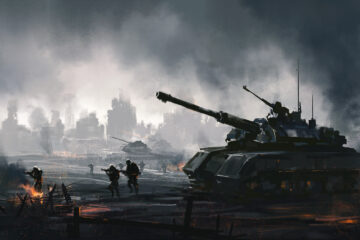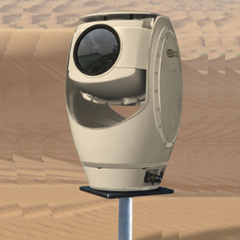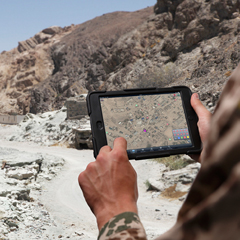Robots are the best instruments soldiers can have on the field which act as “eyes” in a potentially dangerous position without harming themselves in any sense. With soldiers often operating in difficult terrain or entering buildings, the simplest and easiest mode to utilize the technology is to throw them, because of this technique these tactical robots are called Throwbots. Currently, many military units use a small tactical robot called the Small Unmanned Ground Vehicles which is equipped with video reconnaissance technology. The well know throwbots have been designed by Recon Robotics, iRobot have proved to be amongst the best Small Unmanned Ground Vehicles available for the armies across the globe.
With ever changing trends in Combat Systems, defence mechanisms especially with regards to unmanned vehicles, like the Small Unmanned Ground Vehicle (SUGV) becomes an all new platform for the defence industries. Different to earlier fielded man-portable robotic systems, the SUGV is required to use a common radio for communicating with its operator and the FCS network environment.
These Small Unmanned Ground Vehicle (SUGV) are lightweight devices, which are easy and convinient to handle just as any other portable device. The Unmanned Ground Vehicle (UGV) are designed for carrying on military operations in areas like urban terrain, tunnels, sewers, and caves. The SUGV assists in the carrying out of manpower-intensive or high-risk functions like military Intelligence, defence surveillance, and reconnaissance mission, chemical/Toxic Industrial Chemicals (TIC), Toxic Industrial Materials (TIM), etc.).
PistenBully 600 E+ in series production
Small Unmanned Ground Vehicles (SUGV) are designed aiming to minimize Soldiers’ exposure towards dangerous situations. These Small Unmanned Ground Vehicles (SUGV) can either be remotely manned, or manipulated through use of different softwares fitted with speciality drivers. This allows for full control of the unit.
With the advancements in robotics, specially for military these Small Unmanned Ground Vehicles (SUGV) have become one of the major war fighting tools.
Different types of Tactical Robots – Throwbots
Two-Wheeled Cylinder
The Two-wheeled cylinder has a cylindrical body with a large wheel on each ends and a spring-loaded tail. This specific design helps for large-diameter optics to look sideways through the wheel hubs.
Four-Wheeled Brick
The Four-Wheeled Brick is enabled with 4 large wheels which makes it able to climb bigger obstacles and a slower drive speed to allow greater control by the user.
Six-Wheeled Brick
The solid brick-like six-wheeled throwbot has a rectangular body, with three wheels on each of the sides equipped together for full six-wheel drive with skid steering. A paddle, which packs on the top, is used to turn the vehicle in right position if it gets inverted, and to help climb the vehicle over different obstacles.
Inflating Weight-Shifting Sphere
A single compact package has a design that allows it to inflate into a spherical ball after being thrown. Because of some technical issues, these Inflating Weight-Shifting Spheres were stopped from being manufactured.
SpinyBall
The SpinyBall is just as a softball sized sphere making it highly convenient for transportation and easily deployed. When positioned the operator can extend the spiny wheels, exposing the camera and making it drive easily over difficult terrain.
Rebound with Flippers
The Rebound ThrowBot is a constructed prototype which is designed around a commercial toy car with dual external flippers mounted on the rear. It demonstrates a superior terrain transverseability and camera placement.
PackBot
PackBot uses a unique propulsion system with distinctive “flippers” which offer continuous 360 degrees rotation and negotiation of rough terrain and obstacles such as stairs, rocks, logs, rubble and debris. The platform can climb grades and survive submersion in water. It is built to survive drop from two meter height, on a concrete surface, or being thrown through a window or tumbling downstairs. The 18 kg robot can be carried in a backpack, and deployed in a few minutes.
Thus the above different types of Throwbots were designed but today only Four-Wheeled and Six-Wheeled Brick, Packbots are majorly used.
There are no significant technical barriers as such which would prevent the development of a tactically useful ThrowBot. Future ThrowBot designs may come up with simplicity and robustness and avoid adding features that add complexity and cost to the system.



0 Comments